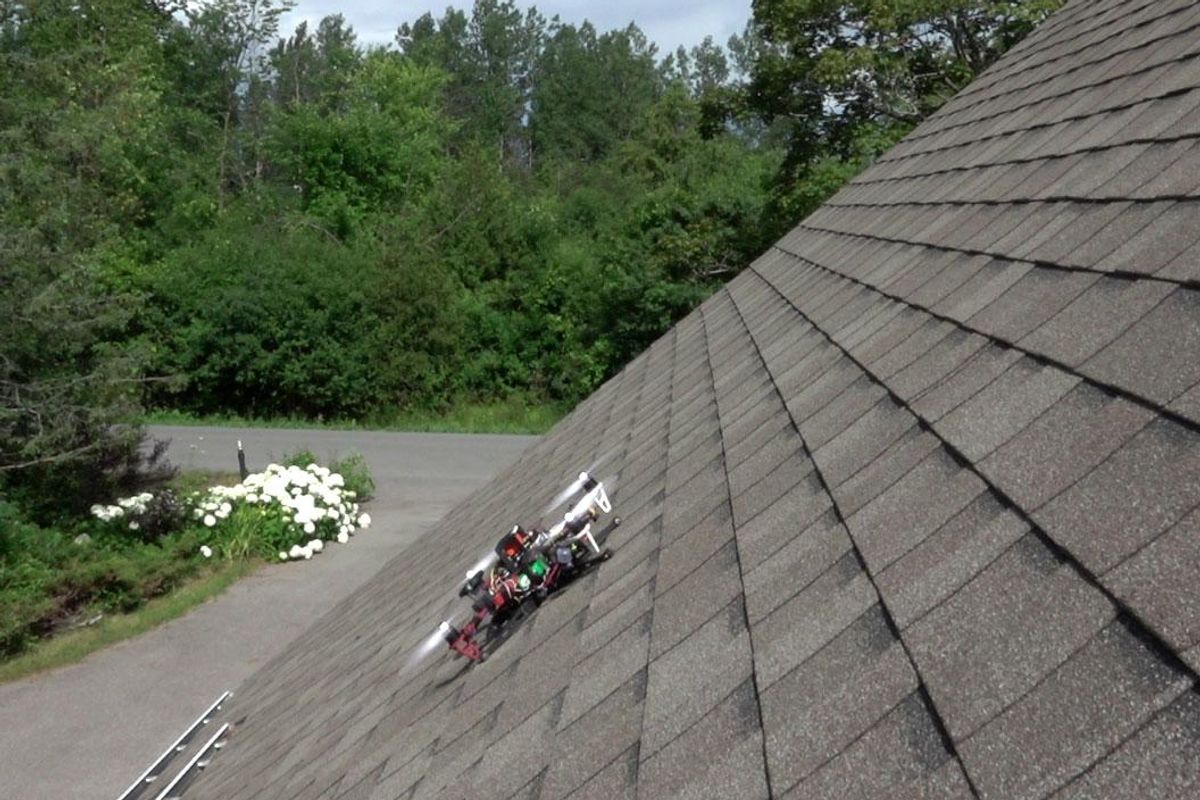
This article is part of our exclusive IEEE Journal Watch series in partnership with IEEE Xplore.
Drones are able to complete a wide range of useful tasks, but they often require specific conditions in order to land safely. Ideally, most drones need to approach a flat surface at a slow enough speed to avoid bouncing or crashing. One group of researchers in Canada has devised a novel solution, however, which allows drones to land on impressively steep inclines of up to 60 degrees, and at speeds up to 2.75 meters per second.
Through a series of experiments, they demonstrate how their approach can be used to safely land drones on the steep rooftops of homes. The results are described in a study published in the July issue of IEEE Robotics and Automation Letters.
“At high impact velocities and on inclined surfaces, commercial multirotors tend to bounce, flip over or even break upon impact, due to their stiff landing gear,” explains John Bass, a PhD student at the Université de Sherbrooke’s Createk Design Lab in Sherbrooke, Québec, who was involved in the study. “Our general approach for landing a quadrotor on a steep incline is to combine two technologies—friction shock absorbers and reverse thrust.”
Bass’s team first began exploring combinations of friction shock absorbers and reverse thrust through simulations. Based on the simulation data, they then created the landing gear with friction shock absorbers using micro-DC (direct current) motors, springs and 3D printed parts.
“The friction shock absorbers that we integrated on the landing gear slow down the UAV’s dynamics enough to successfully exploit reverse thrust,” Bass explains. “[The friction shock absorbers] also promote a continuous contact between the legs and the ground, instead of bouncing indefinitely down the slope as it is the case for normal rigid landing gear.”
They then put their drone to the test, landing it on roofs and landing pads at various speeds and inclines. Bass notes that, given how the drone is able to land on a surface as steep as 60 degrees, this means is capable of landing on most North American rooftops, which typically have a pitch less than 53 degrees.
Fast Multirotor Landings on Steep Roofs using Friction Shock Absorbers and Reverse Thrust
www.youtube.com
This capability could be useful for recharging, surveillance, or emergency landings purposes. Notably, being able to land at high speeds—with less precision and sensing requirements—could be particularly useful during emergency landings.
However, one limitation of this new technology is the heavy weight of the landing gear. Bass notes that lighter landing gear would be better for flight performance, and while his team’s design works well enough for small drones, the heavy weight of the landing gear could be an issue as the technology is scaled up.
The team plans to continue to explore novel ways of landing drones. The lab has previously landed drones on vertical walls and lakes.
“[Our] goal is to further increase the capabilities of UAVs by landing in other difficult scenarios such as boats in harsh sea conditions, on icebergs, and on fast moving ground vehicles,” says Alexis Lussier Desbiens, a professor of mechanical and robotics engineering at the Createk Design Lab who was also involved in the study.
“These scenarios each bring their own new set of challenges, such as the ship’s linear and angular motions when landing on boats, the strong drag force when landing in high wind or at high speed, the turbulent air motion near boats, icebergs and fast-moving vehicles, and the slippery surfaces of icebergs,» he adds.
Source: IEEE Spectrum Robotics
